Long celebrated among marine biologists as one of the world’s most biodiverse underwater environments, the Red Sea has remained largely untouched by leisure tourism, until now. With new infrastructure opening along Saudi Arabia’s western coast, a destination once defined by remoteness has entered the luxury hospitality sphere, combining ecological significance with a rare sense of seclusion.
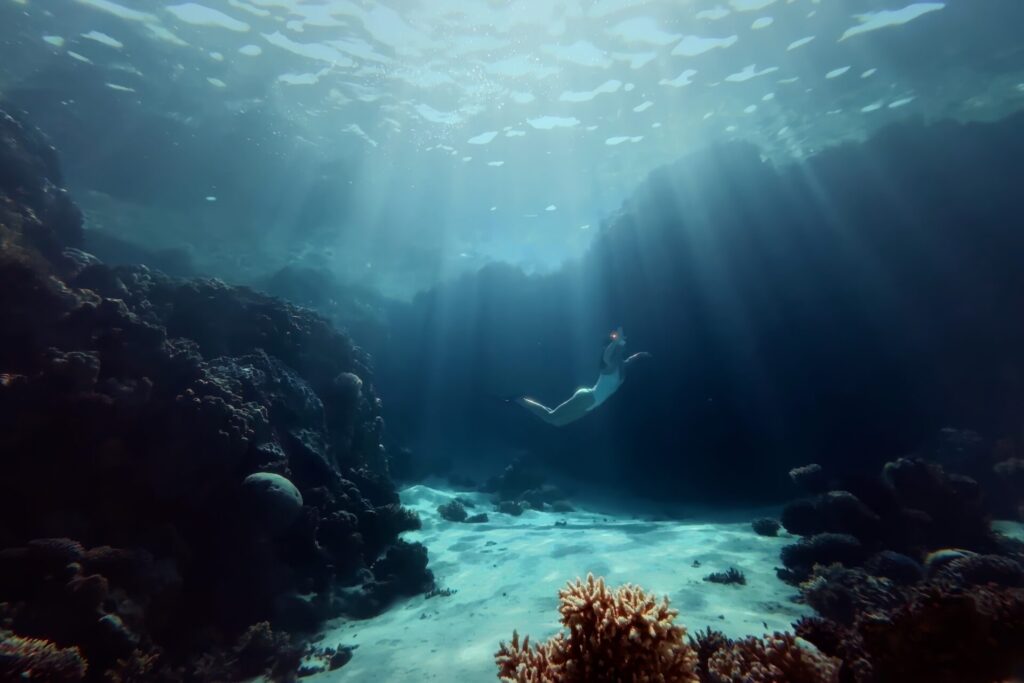
Set on the private Ummahat Island, The St. Regis Red Sea Resort is accessible only by seaplane, helicopter, speedboat, or private yacht from Red Sea International Airport. This inaccessibility has been its greatest preservation tool.
The surrounding waters remain near-pristine and rivals the Maldives or French Polynesia yet remains one of the last great secrets in global travel. The resort’s 90 villas stretch across beachfront and overwater positions, each with private pools and direct access to waters that redefine what travellers think they know about the Red Sea.
Exploring the Depths of Discovery
The magic of this location becomes apparent the moment you descend below. Nearly 200 of the region’s fish species exist nowhere else on Earth, while coral gardens thrive in warm, crystalline waters that make every dive feel cinematic. Positioned within a conservation area, the resort limits exploration to guided experiences led by trained marine specialists.

Marine ecology instructor Amnah Iterji leads these expeditions with the authority of someone who has spent years beneath the waves. Her expertise transforms each dive into an experience that is part exploration, part education to create an immersive learning experience. Encounters with dolphins, manta rays, hawksbill turtles and even whale sharks are less a matter of luck than likelihood, given the abundance of life here.
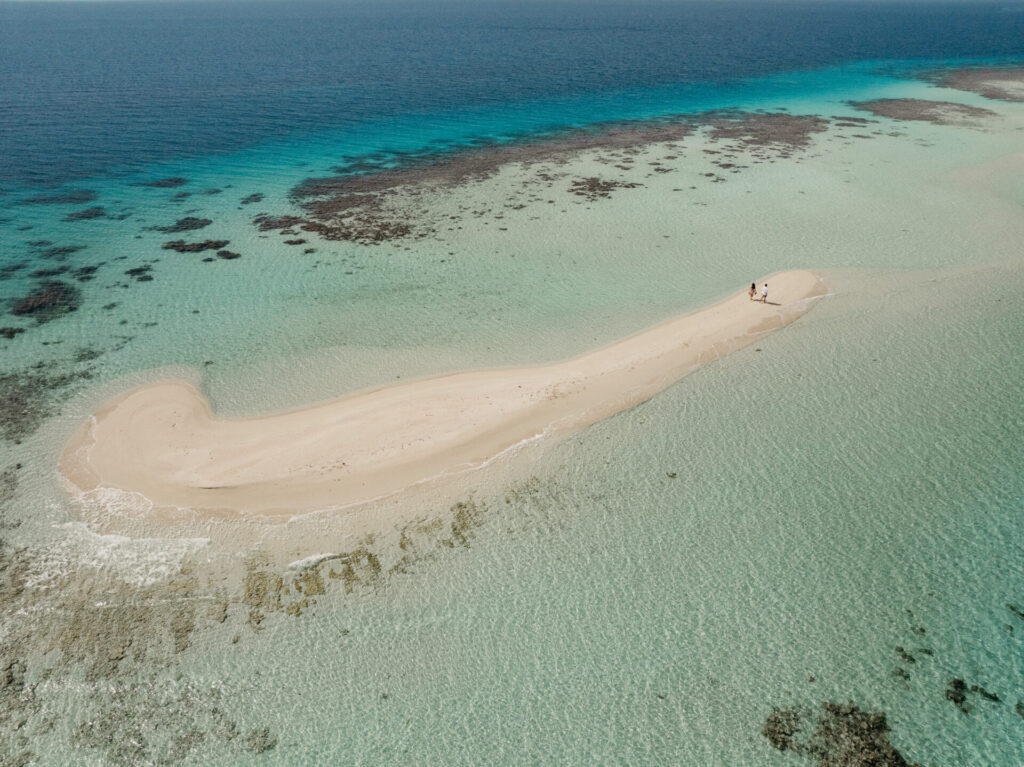
Neighbouring Nujuma Island is home to the Galaxea Diving Centre, which serves both properties and offers PADI certification, conservation dives and heritage expeditions. Together, the two destinations form a marine corridor for all levels,from curious snorkellers to seasoned divers chasing pelagic encounters in deeper waters.
Daily snorkelling safaris uncover coral gardens just metres from shore, while bespoke diving excursions venture further to remote reefs where schools of fish move in shimmering masses, temporarily obscuring the light.
The Beauty Beyond the Reef
While the ocean naturally draws focus, the island’s surface pursuits offer just as much to discover. WAMA, the resort’s water-sports partner, curates a selection of wind-powered activities that make the most of the island’s consistent breezes, such as windsurfing, e-foiling, and catamaran sailing for those seeking movement, or kayaking and paddleboarding for a slower pace through calm mangrove channels.
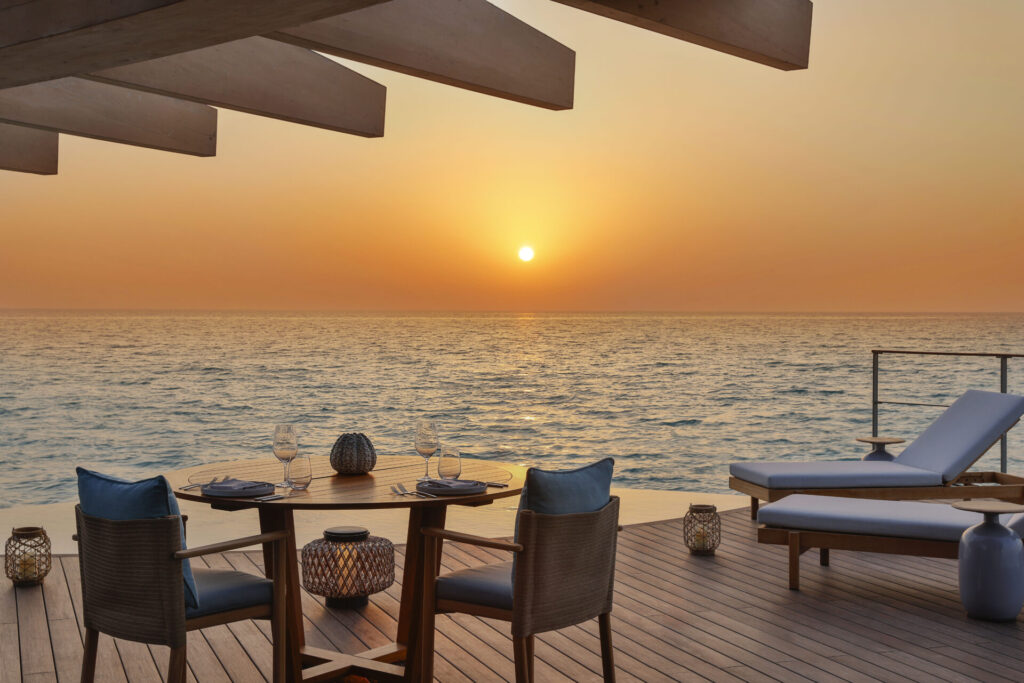
Beyond the shoreline, the desert reveals a quieter kind of beauty. Beneath the water, reefs burst with colour and life, whilst above, the horizon unfolds in soft, sun-washed stillness.
Private Horizons
Overwater villas extend across the lagoon on stilts, while beachfront properties offer direct shore access and uninterrupted sunset views. Floor-to-ceiling glass and expansive decks invite the landscape in, blurring the boundary between interior and exterior. The effect is deliberate: to remind guests that the true luxury here is not found in design excess, but in unmediated connection to place.
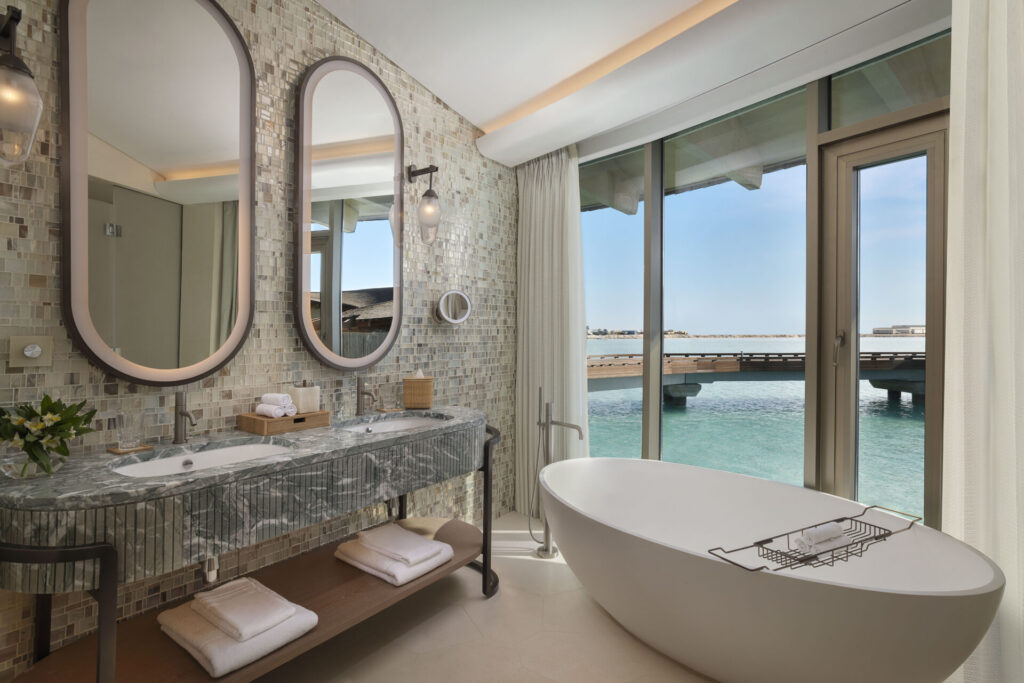
Dining reflects a similar restraint. The resort’s culinary offerings span international cuisines without unnecessary fusion, each dish executed with quiet confidence. The St. Regis Bar honours the brand’s signature Bloody Mary ritual, while the spa offers marine-inspired treatments in open-air cabanas overlooking the sea. A state-of-the-art fitness centre, children’s club and multiple pools complete the offering, though few guests will find reason to leave the water for long.
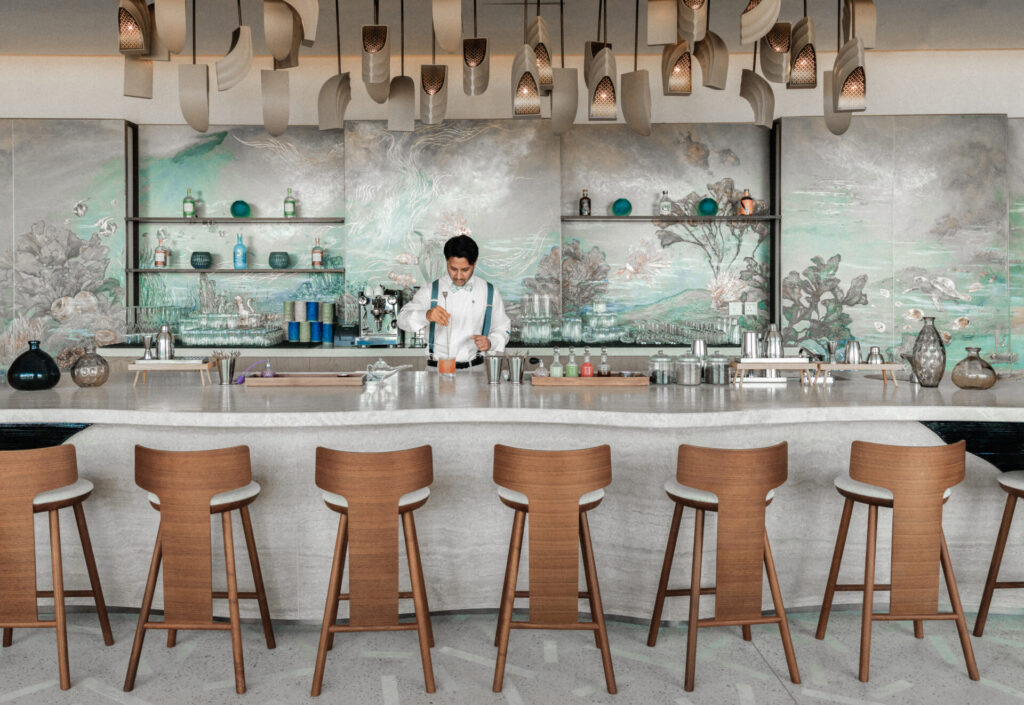
As with every St. Regis property, butler service comes standard. Requests are handled with such seamlessness that distance from the mainland feels not like isolation but luxury refined to its purest form.
The Future of Responsible Travel
The resort operates under Red Sea Global’s regenerative tourism framework, built to enhance rather than simply protect the environment. Pursuing LEED Zero status, the property runs on renewable energy, with solar farms generating 71,600 MWh annually and offsetting over 40,000 tons of CO₂. Water is desalinated using clean energy, and wastewater is recycled for irrigation, ensuring sustainability without aesthetic compromise.
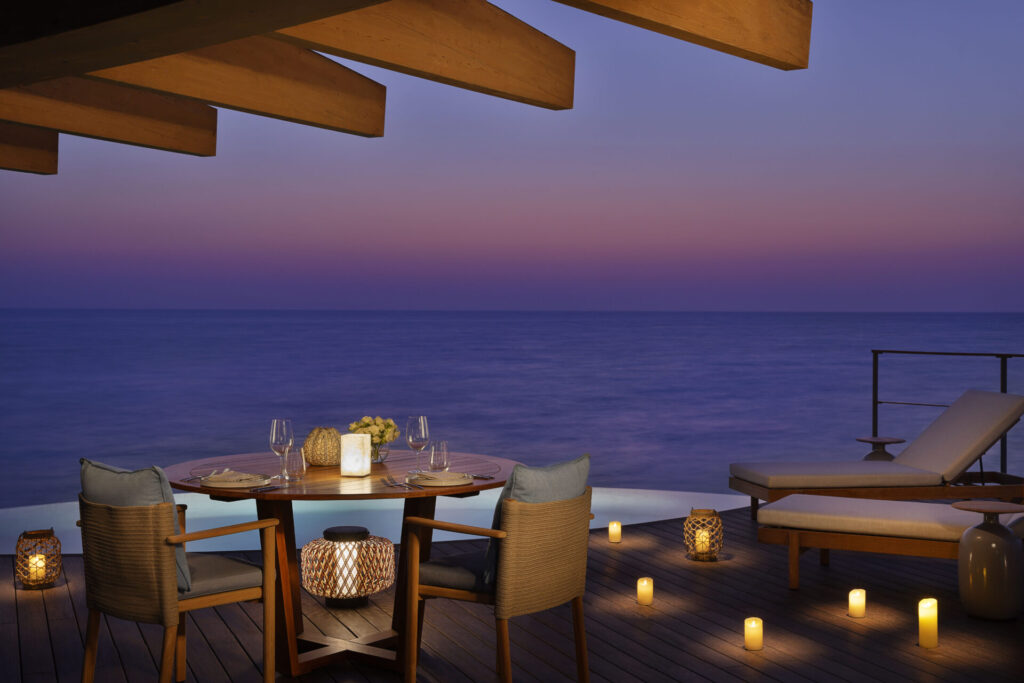
Perhaps most telling is the decision to leave 75 percent of Ummahat Island undeveloped. Only the land essential for operations was built upon, preserving natural habitats and visual harmony. The result is a setting that feels untouched, where the view from each villa remains uninterrupted.


